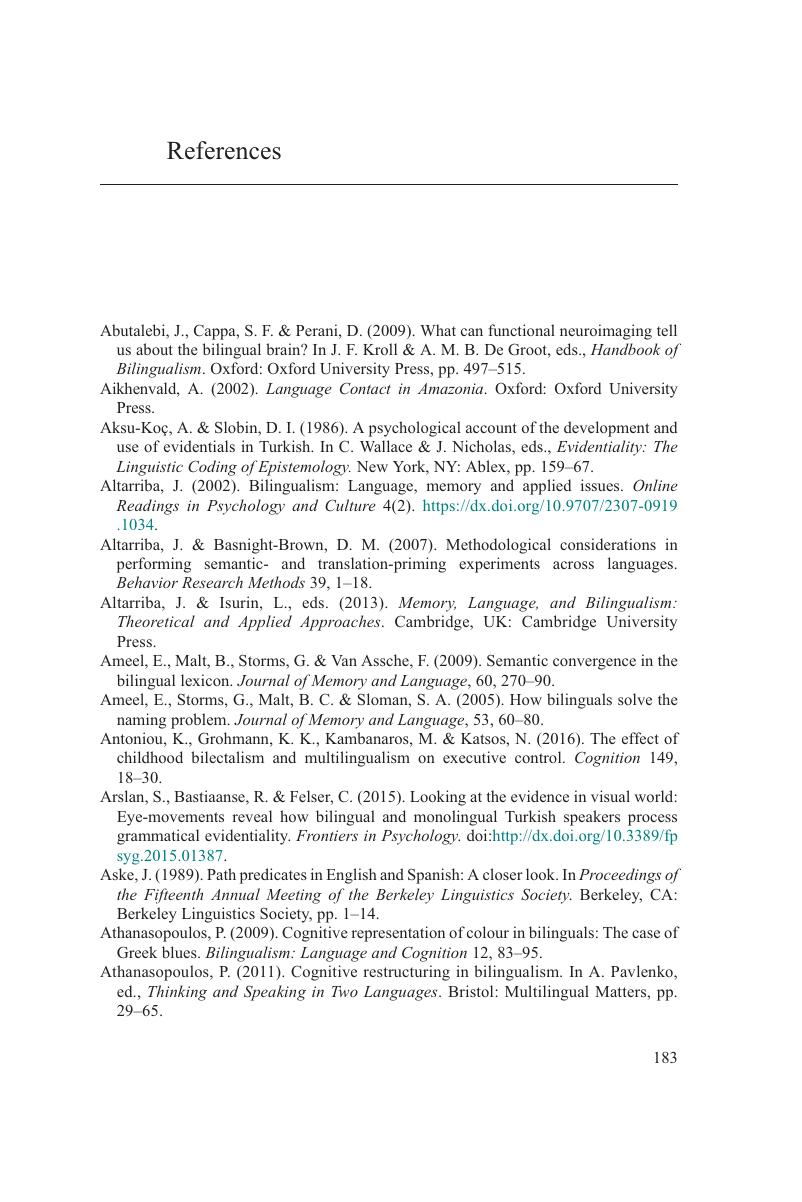Book contents
- Bilingualism in Action
- Bilingualism in Action
- Copyright page
- Dedication
- Contents
- Figures
- Tables
- Preface
- Acknowledgements
- 1 Introduction
- 2 Bilingualism Research
- 3 Introducing CASP for Bilingualism
- 4 Action Time
- 5 Bilingual Cognition
- 6 Bilinguals in Action as Language Professionals
- 7 Conclusions and Future Directions
- References
- Language Index
- Name Index
- Subject Index
- References
References
Published online by Cambridge University Press: 10 October 2019
- Bilingualism in Action
- Bilingualism in Action
- Copyright page
- Dedication
- Contents
- Figures
- Tables
- Preface
- Acknowledgements
- 1 Introduction
- 2 Bilingualism Research
- 3 Introducing CASP for Bilingualism
- 4 Action Time
- 5 Bilingual Cognition
- 6 Bilinguals in Action as Language Professionals
- 7 Conclusions and Future Directions
- References
- Language Index
- Name Index
- Subject Index
- References
Summary

- Type
- Chapter
- Information
- Bilingualism in ActionTheory and Practice, pp. 183 - 205Publisher: Cambridge University PressPrint publication year: 2019



